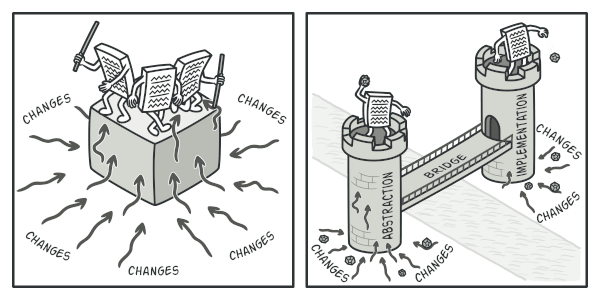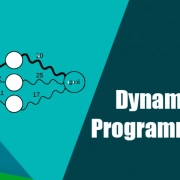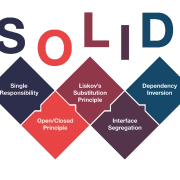Truly Understanding Object-Oriented Programming
Why is Object Oriented Programming Important?
Object-oriented programming (OOP) may seem like a simple matter for many developers, simply creating classes and adding attributes and methods to them. For example, extending a class or using a simple abstract class are perceived as the cornerstones of OOP. However, the reality is that object-oriented programming It's not just about these superficial applications. I realized the true power of OOP when I learned advanced concepts like design patterns and SOLID principles. In this article, I'll share how these concepts transformed the way I write code and why you should too.
Is OOP Just Class and Method?
When learning OOP, most developers start by creating classes and adding methods and properties. In some cases, they go a step further by inheriting multiple classes or using interfaces. However, this approach can often lead to complex and difficult-to-maintain chunks of code, known as "spaghetti code." For example, if you use a structure full of conditional statements (if-else) in a single class to manage different types of transactions across a project, your code will become both unreadable and difficult to add new features. So, how can we solve this problem? The answer lies in design patterns.
My Introduction to Design Patterns
The true power of object-oriented programming, Abstract Factory, Adapter, Bridge, Singleton And Facade I realized this when I learned about design patterns like "How to Use a Value?". These patterns make your code more modular, readable, and maintainable. For example, in my own project, I needed to manage different types of money transfers: withdrawals from a source account and deposits into a destination account. If I had tried to handle these operations with conditions within a single class using a traditional approach, the code would have been complex and error-prone.

Instead, Bridge And Adapter I used design patterns. The Bridge pattern separated the transaction logic (for example, withdrawals and deposits) from the source and destination adapters. Each adapter managed the details specific to its transaction type (for example, creating or deleting records). The Bridge class coordinated the transactions using methods from these adapters: First, create the withdrawal record on the source adapter, then create the deposit record on the destination adapter, and roll back any errors. This structure allows:
- The code became independent of each type of transaction.
- Adding new transaction types just got easier.
- Logging and error management were performed on each adapter in accordance with its own context.
This approach increased the readability of the code and SOLID principles provided a convenient, flexible structure. For more information Gang of Four's design patterns book a great starting point.
Example: Transaction Management with Adapter and Bridge Patterns
Let me explain with an example: In my project, money transfer transactions involved different sources (e.g., bank account, wallet) and destinations (e.g., another account, payment system). I created separate adapter classes for each transaction type using the Adapter pattern. For example:
- Source Adapter: Manages withdrawal transactions.
- Target Adapter: Manages deposit transactions.
interface TransactionAdapter { public function withdraw(); public function deposit(); public function rollback(); } class SourceAdapter implements TransactionAdapter { public function withdraw() { /* Withdrawal */ } public function deposit() { /* If necessary */ } public function rollback() { /* Rollback */ } } class TargetAdapter implements TransactionAdapter { public function withdraw() { /* If necessary */ } public function deposit() { /* Deposit */ } public function rollback() { /* Rollback */ } } class TransactionBridge { private $sourceAdapter; private $targetAdapter; public function __construct(TransactionAdapter $source, TransactionAdapter $target) { $this->sourceAdapter = $source; $this->targetAdapter = $target; } public function processTransaction() { try { $this->sourceAdapter->withdraw(); $this->targetAdapter->deposit(); } catch (Exception $e) { $this->sourceAdapter->rollback(); $this->targetAdapter->rollback(); throw $e; } } }This sample code clearly demonstrates the separation of abstraction and implementation of the Bridge pattern.
The bridge pattern coordinates the logic of a transaction by bringing these adapters together. For example, during a transfer:
- The source adapter creates the withdrawal record.
- The destination adapter creates the deposit record.
- In case of error, each adapter rolls back its own transaction.
This made the code both modular and extensible. Adding a new operation type required simply writing a new adapter. This approach Dependency Inversion It also complied with SOLID principles such as.
My advice: Don't settle for just OOP
To truly understand object-oriented programming, I recommend these steps:
- Learn Design PatternsPatterns like Adapter, Bridge, Singleton make your code more flexible and maintainable. Refactoring.Guru is a great resource on this subject.
- Adopt SOLID Principles: These principles increase the maintainability of your code.
- PracticeApply these patterns to your own projects. Learning from your mistakes is the best teacher.
- Get Inspired by Communities: Open source projects on GitHub Platforms like or Stack Overflow provide real-world examples.
Conclusion: Explore OOP in Depth
In conclusion, object-oriented programming isn't just about writing classes and methods. Design patterns and SOLID principles unlock the true power of OOP. In my own project, I've seen how using the Adapter and Bridge patterns simplifies complex operations. You too can make your code more readable, flexible, and professional by learning these concepts. Which design pattern do you use? Let's meet in the comments!








